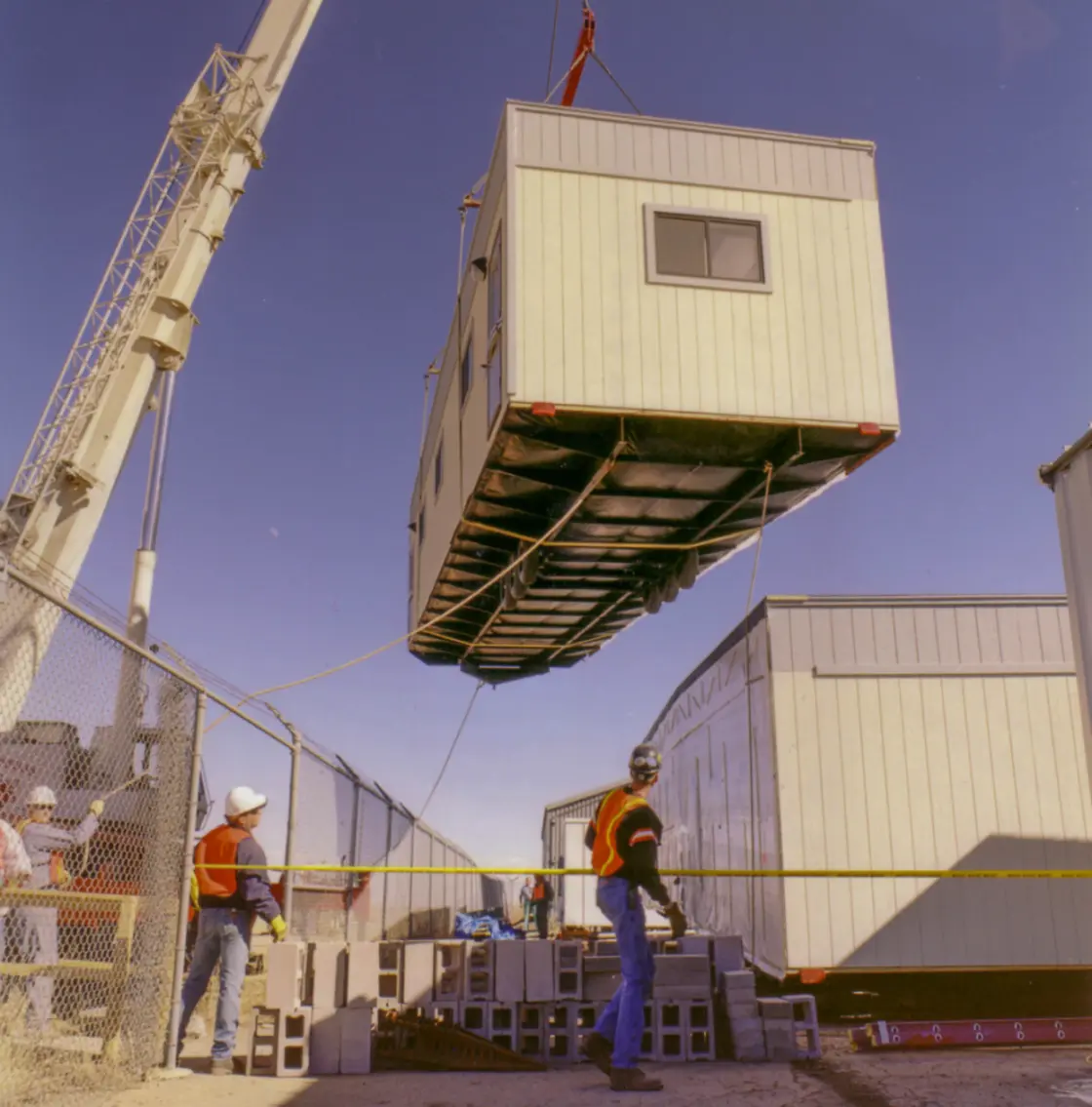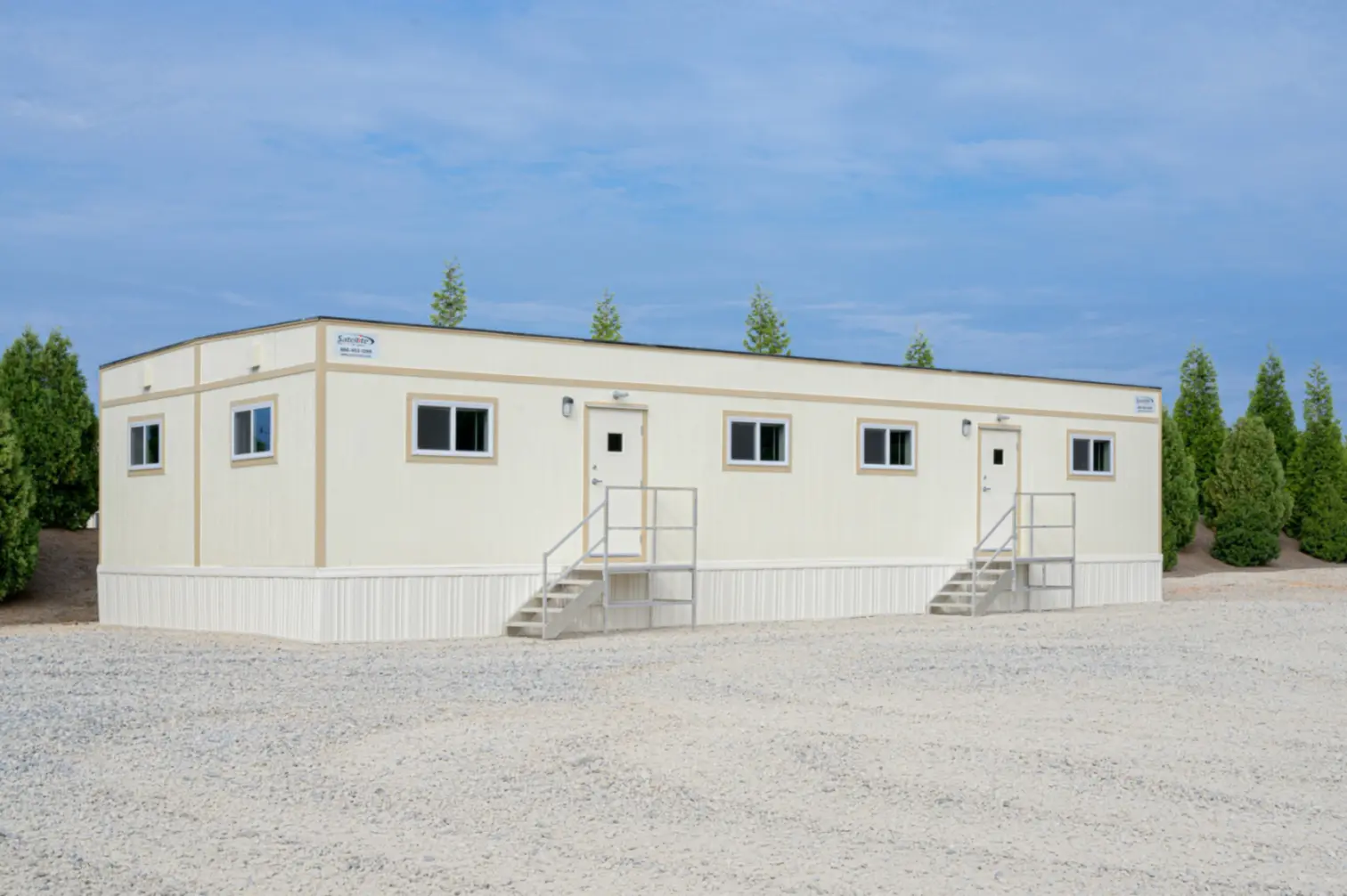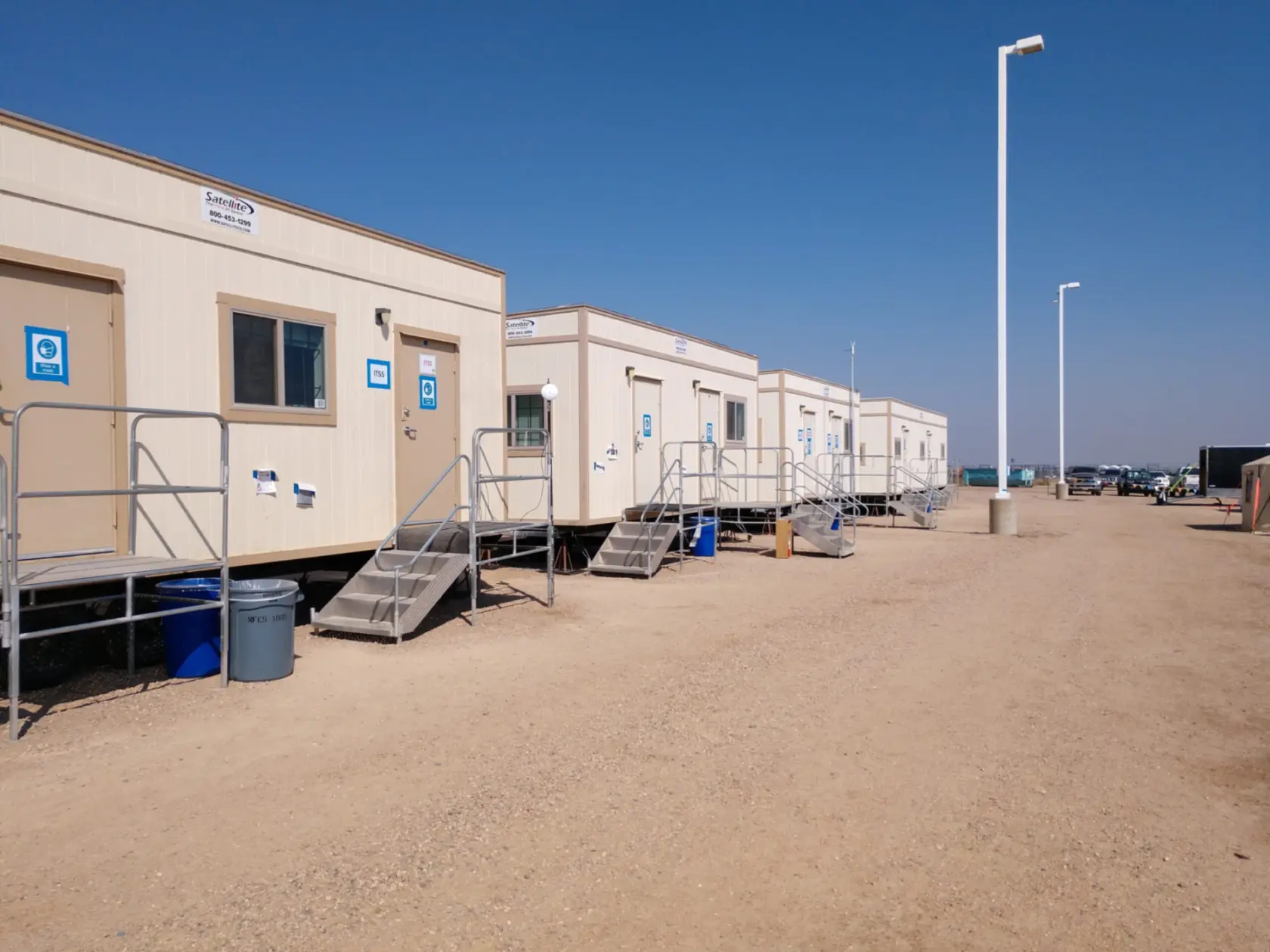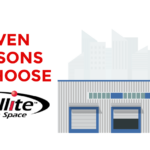
Architecture and design take shape due to innovation in the construction industry. While various methods are gaining popularity, modular construction symbolizes efficiency, sustainability, and adaptability. Despite its benefits, modular construction faces misconceptions that diminish its true value.
Satellite Shelters wants to challenge these misconceptions so modular design can gain recognition as being innovative. By dispelling myths and showcasing flexibility, quality, and customization options, modular construction opens doors to sustainable practices, diverse applications, and cutting-edge solutions.
Understanding Modular Design: What Does Modular Mean?
Before disposing of myths about modular design, let’s clarify what it is. At its core, modular construction involves crafting individual modules off-site in a controlled factory environment. Building modules are then delivered to the construction site to assemble, streamlining the process.
The allure of modular design lies in its ability to provide top-notch structures with heightened accuracy and efficiency. This construction approach speeds up projects and saves money by focusing on precision and quality control. As a result of modular design, buildings have become more flexible, sustainable, and customizable, ushering in a new era of building innovation through standardized sections that can move and interconnect.
Myth 1: Limited Design Flexibility
It’s common to think modular construction limits design flexibility. On the contrary, modular building design offers many creative possibilities. You can make modular structures fit any design preference, from contemporary sleek aesthetics to traditional architectural styles.
With technological advancements and refined manufacturing methods, architects and designers can more freely develop unconventional modular solutions. This myth surrounding limited design possibilities in modular construction is untrue, as modular engineering continues to empower professionals to craft distinctive, personalized structures that defy traditional limitations.
Myth 2: Inferior Quality
One common myth about modular construction is that it produces lower-quality outcomes than traditional methods. Modular construction often produces buildings that match or surpass those built on-site in quality. With rigorous quality control and precise fabrication techniques, modular engineering guarantees uniformity and excellence throughout all modules.
Also, the factory setting reduces the risk of weather issues, so structures last long. Once we dispel the myth that modular construction is inferior, it’s clear that modular approaches can deliver high-quality, robust buildings that meet and exceed industry standards.
Myth 3: Lack of Customization
Some people think modular construction has limited customization options, which isn’t true. Modular construction gives clients many customization options to make their buildings exactly how they want them.
Customizing modular structures to fit your tastes and needs is possible, regardless of layouts, finishes, or sustainable features. Building with prefabrication and customization opens up a lot of creativity. Modular building design shows flexibility, offering tailor-made solutions that match your taste.
Debunking Misconceptions: Embracing Modular Construction’s Potential
Modular construction greatly impacts the building industry, so dispelling these myths is important. Design boundaries, quality concerns, or customization limitations don’t constrain modular structures. Instead, modular structures are about innovation, sustainability, and flexibility. Discover how modular construction can redefine conventions, provide eco-friendly alternatives, and meet diverse design requirements across multiple dimensions.
Innovative Capabilities
Modular building pushes the envelope and re-imagines conventional construction norms. With state-of-the-art technology and cutting-edge materials, modular engineering allows architects to experiment and be creative. Furthermore, modular construction seamlessly incorporates flexible design principles. By embracing these forward-looking capabilities, we can pioneer architectural innovations that prioritize ingenuity, practicality, and environmental awareness.
Sustainability Benefits
Today’s construction methods focus on sustainability at a time when environmental responsibility is more important than ever. Modular construction emerges as a leader in sustainable building, reducing waste and energy use, and increasing resource efficiency with environmentally friendly solutions.
Its controlled factory environment maximizes material efficiency, minimizing waste generation and disturbances on-site. Following global trends toward environmentally responsible construction, modular buildings incorporate eco-friendly materials and technologies and renewable energy sources.
Diverse Applications
Modular buildings are for more than just residential use. They can also serve as a means for:
- Commercial spaces. Modular construction offers quick and efficient solutions for creating office buildings, retail stores, restaurants, and other commercial establishments.
- Educational facilities. Modular buildings can provide classrooms, administrative offices, libraries, and other educational structures to accommodate growing student populations or temporary space needs.
- Health care centers. Modular construction provides flexible options for health care facilities such as clinics, medical offices, hospitals, and laboratories, allowing for rapid expansion or renovation projects.
- Industrial complexes. Modular construction can create warehouses, factories, storage facilities, and distribution centers catering to the specific needs of industrial operations.
- Public sector. Modular construction methods can benefit government buildings, community centers, recreational facilities, and emergency response structures by being efficient and versatile.
Their versatility and scalability make them ideal for projects of all sizes and complexities. Quick deployment initiatives, temporary structures, and lasting buildings can benefit from their ability to streamline construction processes, maintain quality standards, and shorten project timelines. With its inventive spirit, modular construction can adapt to meet specific design requirements, transforming construction methods in many places.
Join the Modular Revolution With Satellite Shelters
Let Satellite Shelters show you what modular construction is really about. Forget the myths and embrace the reality of efficient, sustainable building solutions. We rent top-quality modular buildings tailored to your needs.
Whether it’s a commercial space, an educational facility, a health care center, or anything in between, Satellite Shelters’ modular structures defy common myths. Contact your nearest Satellite Shelters office to take advantage of the convenience and innovation of modular construction. Call or email us today!





